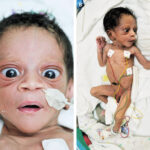Neonates at High Risk of Infection: Neonates, particularly those born preterm or under compromised maternal conditions, are highly susceptible to infections due to immature immune responses and exposure to pathogenic organisms during or after delivery. Infections in this population can rapidly progress to sepsis, meningitis, or pneumonia, requiring vigilant screening, prompt intervention, and robust infection control measures.

Understanding Neonatal Susceptibility to Infections
Immature Immune System in Neonates
Neonates possess underdeveloped innate and adaptive immune responses:
- Reduced neutrophil function
- Lower complement activity
- Inefficient antigen presentation
- Minimal immunoglobulin G (IgG) unless maternally transferred in late gestation
This immaturity significantly limits the neonate’s ability to mount effective responses to bacterial, viral, or fungal pathogens.
High-Risk Factors for Neonatal Infection
Maternal Risk Factors
- Prolonged rupture of membranes (>18 hours)
- Maternal intrapartum fever (>38°C)
- Chorioamnionitis
- Group B Streptococcus (GBS) colonization without adequate intrapartum prophylaxis
- Untreated urinary tract infections
- Premature labor or delivery
Neonatal Risk Factors
- Prematurity (<37 weeks gestation)
- Low birth weight (<2,500 grams)
- Invasive procedures (e.g., intubation, catheterization)
- Birth asphyxia
- Need for prolonged NICU stay
- Twin or multiple gestation
- Congenital anomalies, particularly of the gastrointestinal or respiratory systems
Classification of Neonatal Infections
| Infection Type | Onset Period | Common Pathogens |
|---|---|---|
| Early-Onset Sepsis | <72 hours post-birth | GBS, E. coli, Listeria monocytogenes |
| Late-Onset Sepsis | >72 hours post-birth | Coagulase-negative Staphylococci, Klebsiella, Candida |
| Congenital Infections | In utero or at birth | TORCH organisms (Toxoplasma, Others, Rubella, CMV, HSV) |
Clinical Manifestations of Neonatal Infections
Infections may present with subtle and non-specific signs:
- Temperature instability (hypothermia or fever)
- Poor feeding or vomiting
- Lethargy or irritability
- Respiratory distress
- Apnea or bradycardia
- Jaundice (especially prolonged)
- Seizures in severe CNS involvement
Diagnostic Protocol for Neonates at High Risk of Infection
Accurate and timely diagnosis is critical for neonates exhibiting any sign of infection or with notable risk factors.
Standard Investigations
- Complete Blood Count (CBC) – Check for neutropenia, leukocytosis, or left shift
- C-reactive Protein (CRP) – Elevated in inflammatory states
- Procalcitonin – Early indicator of bacterial infection
- Blood Culture – Gold standard for sepsis confirmation
- Lumbar Puncture – Rule out meningitis in symptomatic neonates
- Urine Culture – Especially in late-onset infections
- Chest X-ray – Evaluate for pneumonia if respiratory symptoms are present
Empirical Antibiotic Therapy for Suspected Infection
Early-Onset Sepsis
- Ampicillin + Gentamicin: Targets GBS, E. coli, Listeria
Duration: 7–10 days (adjusted per culture and clinical response)
Late-Onset Sepsis
- Vancomycin + Cefotaxime/Meropenem: For broader coverage in NICU-acquired infections
Consider antifungal therapy in very low birth weight infants or if Candida is suspected
Adjusting Therapy
Based on culture sensitivity, therapy must be refined to minimize resistance and toxicity.
Infection Control Measures in the NICU
- Strict hand hygiene protocols
- Dedicated medical equipment for each neonate
- Use of closed incubators and sterile technique during procedures
- Limiting visitation and caregiver traffic
- Regular surveillance cultures and cohorting of infected neonates
Prevention Strategies for High-Risk Neonates
Maternal Interventions
- GBS screening at 35–37 weeks gestation
- Intrapartum antibiotic prophylaxis for GBS-positive mothers
- Prompt treatment of maternal infections
Neonatal Measures
- Delayed bathing to preserve skin integrity
- Use of probiotics in preterm infants (based on clinical policy)
- Early initiation of breastfeeding for passive immunity
- Vitamin A and D supplementation to enhance immune support
Prognosis and Long-Term Considerations
Favorable Outcomes
- Timely identification and appropriate treatment generally lead to complete recovery.
Adverse Outcomes
Delayed or inadequate treatment may result in:
- Neurodevelopmental delays
- Cerebral palsy
- Sensorineural hearing loss
- Chronic lung disease
- Mortality, particularly in preterm neonates
Frequently Asked Questions
What makes a neonate high risk for infection?
Neonates born preterm, with maternal risk factors like chorioamnionitis or prolonged rupture of membranes, are at high risk.
Can infections be prevented in high-risk neonates?
Yes. Through maternal GBS prophylaxis, strict NICU hygiene, early breastfeeding, and timely diagnosis and treatment.
How quickly should antibiotics be started in a suspected infection?
Empirical antibiotics should be started immediately after sepsis workup if clinical suspicion is high.
Is sepsis the only infection risk in neonates?
No. Other risks include meningitis, pneumonia, urinary tract infections, and congenital TORCH infections.
Can late-onset infections be prevented?
NICU infection control protocols and limiting invasive procedures help prevent late-onset infections.
Neonates at high risk of infection require a multidisciplinary approach that emphasizes early identification, targeted therapy, and rigorous preventive strategies. Understanding the complex interplay of maternal, perinatal, and environmental factors allows healthcare providers to implement evidence-based practices that significantly reduce morbidity and mortality in this vulnerable population. By strengthening perinatal care and enhancing NICU protocols, we can ensure better outcomes and safer beginnings for high-risk neonates.

